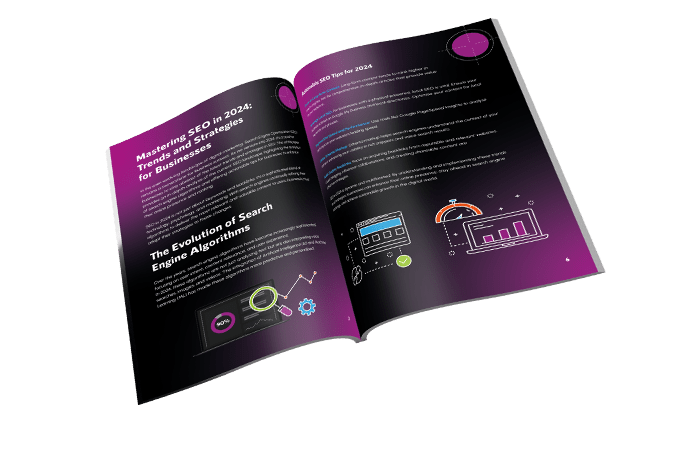News
What is SEO and How to Get Started
Search Engine Optimisation (SEO) is a crucial aspect of digital marketing that involves optimising your website so it ranks higher in search engine results pages (SERPs). In today’s online world, visibility is key to attracting traffic, whether you’re running a personal blog, an e-commerce store, or a corporate website. When done correctly, SEO can significantly improve your site’s organic search rankings, driving traffic, increasing brand awareness, and ultimately leading to more conversions and sales.
This comprehensive guide will introduce you to SEO, explain its importance, and provide actionable steps to help you get started with SEO. Whether you’re a beginner or looking to improve your existing strategy, this guide will equip you with the knowledge and tools needed to make your website more discoverable and appealing to both users and search engines.
What is SEO?
SEO stands for Search Engine Optimisation, a set of strategies and practices designed to improve the visibility of a website on search engines like Google, Bing, and Yahoo. The goal of SEO is to rank your website higher in the SERPs for relevant keywords, making it easier for users to find your content, products, or services.
The process of SEO is not a one-time activity but an ongoing effort that requires constant refinement and adjustments. By optimising your website for search engines, you ensure that your site appears at the top of search results when people search for terms related to your business.
The Importance of SEO
SEO is a vital component of any successful online marketing strategy for several reasons:
- Increased Organic Traffic: Organic search traffic (traffic that comes from search engines) is one of the most valuable sources of visitors. Websites that appear at the top of search results are more likely to be clicked on, driving higher volumes of traffic without the need for paid advertising.
- Cost-Effective Marketing: Unlike paid ads, SEO doesn’t require ongoing costs to maintain. While SEO requires an investment of time and resources, it provides long-term results and a high return on investment (ROI).
- Better User Experience: SEO involves optimising your website for both search engines and users. A well-structured, fast, and user-friendly website is more likely to engage visitors and encourage them to stay longer, reducing bounce rates and improving conversions.
- Brand Credibility and Trust: Websites that rank higher in search results are often perceived as more trustworthy and credible. Users tend to trust organic search results more than paid advertisements, making SEO a valuable tool for building your brand’s authority.
- Local SEO and Local Business Growth: SEO isn’t just about global visibility. Local SEO helps small and medium-sized businesses reach local customers, which is especially crucial for brick-and-mortar stores or service providers.
According to a recent survey, 93% of online experiences begin with a search engine (Search Engine Journal, 2024). The importance of SEO can’t be overstated in an age where being found online is essential for success.
How Search Engines Work
To understand SEO, it’s important to first understand how search engines work. When users enter a search query, search engines like Google use algorithms to sift through billions of web pages and determine which results are most relevant. These algorithms consider numerous factors, including content quality, website structure, backlinks, and user engagement metrics.
Key Elements of Search Engine Algorithms
Search engines use a combination of algorithms and ranking factors to determine the relevance of a page. While the exact algorithm remains a closely guarded secret, some of the known key ranking factors include:
- Content Quality: Search engines prioritise content that is relevant, high-quality, and comprehensive. Well-researched, well-written content is more likely to rank higher.
- Backlinks: Backlinks (links from other websites to your own) act as a vote of confidence in your content. The more authoritative and relevant websites link to your site, the higher your website will rank.
- User Experience (UX): Factors such as site speed, mobile-friendliness, and easy navigation contribute to a positive user experience. Websites with poor UX will often have higher bounce rates and lower rankings.
- On-Page Optimisation: This includes elements like title tags, meta descriptions, headings, and keyword usage. Proper on-page SEO ensures that search engines understand what your content is about.
- Technical SEO: This includes the backend structure of your site, such as its architecture, URL structure, and the use of structured data. A technically sound website helps search engines crawl and index your content more effectively.
- Engagement Metrics: Search engines use metrics like click-through rates (CTR), time on site, and bounce rates to determine the quality of a page. Higher engagement typically signals to search engines that users find the content valuable.
Understanding these ranking factors is essential for creating a website that performs well in search engines. Now, let’s dive into how you can get started with SEO.
How to Get Started with SEO
Step 1: Conduct Keyword Research
Keyword research is the foundation of any successful SEO strategy. It involves identifying the terms and phrases that your target audience is searching for and using these keywords to optimise your content. The right keywords can help you rank higher in search results and attract more relevant traffic.
Tools for Keyword Research
There are numerous tools available to assist with keyword research, both free and paid. Some of the most popular options include:
- Google Keyword Planner: A free tool provided by Google that allows you to find keywords related to your business and see their search volume.
- SEMrush: A paid tool that provides in-depth keyword analysis, including search volume, competition, and potential traffic.
- Ahrefs: Another paid tool offering detailed keyword research, along with backlink analysis and site auditing features.
- Ubersuggest: A free keyword research tool that provides keyword suggestions, search volume data, and SEO competition analysis.
When selecting keywords, focus on those that are relevant to your content, have a decent search volume, and aren’t too competitive. Long-tail keywords (phrases with three or more words) can be easier to rank for and are often more specific to user intent.
Keyword Intent
It’s important to consider search intent when selecting keywords. There are three main types of search intent:
- Navigational: The user is looking for a specific website or page (e.g., “BBC News”).
- Informational: The user is seeking information on a particular topic (e.g., “how to improve SEO”).
- Transactional: The user is ready to make a purchase or take an action (e.g., “buy running shoes online”).
By aligning your content with the intent behind the search query, you can improve the relevance of your pages and increase your chances of ranking.
Step 2: On-Page Optimisation
On-page optimisation involves adjusting the content and structure of your pages to ensure they are easily understood by search engines and provide a good user experience.
Title Tags and Meta Descriptions
- Title Tags: The title tag is one of the most important on-page SEO elements. It appears in the search results as the clickable headline and should include your target keyword while being engaging and relevant to the content.
- Meta Descriptions: While meta descriptions do not directly impact rankings, they play a role in improving your click-through rate. A well-crafted meta description summarises the content of the page and encourages users to click on your link.
Headers and Content Optimisation
Using headers (H1, H2, H3) helps structure your content and makes it more readable for users and search engines. The H1 tag should typically be used for the page title, and subsequent headers (H2, H3) should break the content into sections.
Within the body of your content, naturally include your target keywords and related terms. Avoid keyword stuffing, which is the practice of overusing keywords in an unnatural way, as this can harm your rankings.
Step 3: Technical SEO
Technical SEO focuses on the backend aspects of your website, such as site speed, mobile optimisation, and crawlability. These elements are crucial for search engines to properly index and rank your content.
Site Speed
Site speed is a ranking factor, and faster websites provide a better user experience. Tools like Google PageSpeed Insights can help you identify areas where you can speed up your website. Common speed improvements include optimising images, using browser caching, and minifying JavaScript and CSS files.
Mobile-Friendliness
With more than 50% of global web traffic coming from mobile devices (Statista, 2023), it’s crucial that your website is mobile-friendly. Ensure that your site is responsive and offers a seamless experience across all device types.
Structured Data
Structured data helps search engines understand the content of your pages. By adding structured data markup (such as Schema.org) to your pages, you can enhance your search results with rich snippets like star ratings, reviews, and pricing.
Step 4: Building Backlinks
Backlinks, or inbound links, are links from other websites that point to your content. They act as a vote of confidence, signalling to search engines that your content is authoritative and trustworthy. Earning high-quality backlinks is one of the most effective ways to improve your website’s SEO.
How to Build Backlinks
- Guest Blogging: Writing guest posts for reputable blogs in your industry is a great way to earn backlinks.
- Content Promotion: Promote your content on social media and other platforms to encourage others to link to it.
- Broken Link Building: Find broken links on other websites and offer your content as a replacement.
Focus on acquiring backlinks from high-authority websites that are relevant to your industry.
Step 5: Monitor and Measure Results
SEO is an ongoing process, and it’s important to track your progress and make adjustments as needed. Tools like Google Analytics and Google Search Console provide valuable insights into your site’s performance, including traffic, rankings, and user behaviour.
Regularly review your SEO strategy and make improvements based on data-driven insights. SEO trends and algorithms evolve, so staying up-to-date with the latest changes is essential for long-term success.
Conclusion
SEO is an essential tool for any website looking to improve its visibility and attract more traffic. By focusing on keyword research, on-page optimisation, technical SEO, backlink building, and monitoring results, you can create a successful SEO strategy that enhances your online presence and drives long-term growth.
With 93% of online experiences beginning with a search engine, it’s clear that SEO is no longer optional for businesses looking to thrive in the digital world (Search Engine Journal, 2024). By following the steps outlined in this guide, you’ll be well on your way to mastering SEO and increasing your website’s chances of ranking higher in search results.





The Ultimate Social Media Guide
With the ever-growing power of social media, we use the latest techniques, video, and animation software to craft eye-catching social media assets that make your brand pop. Our designers, wielding Adobe Creative tools, create distinctive animations and graphics to illuminate your brand story and highlight your products or services. Want a unique design? No problem – we also offer bespoke designs to match your brand aesthetic.